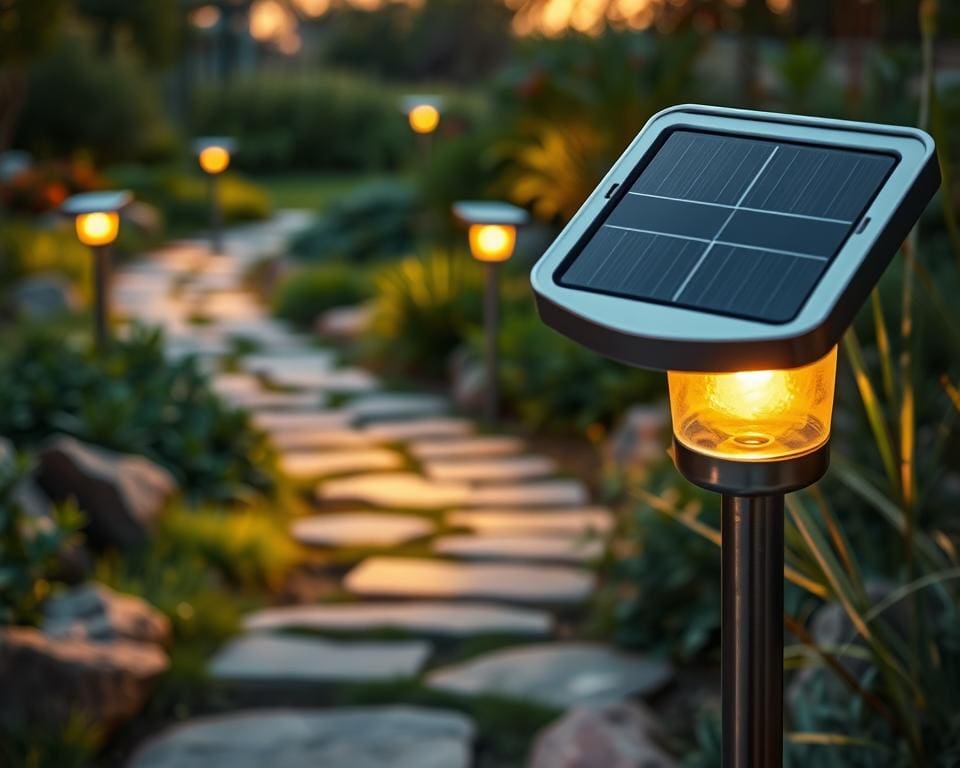As the frosty months approach, many homeowners ponder the effectiveness of their outdoor lighting solutions. Specifically, can solar path lights work all winter long? This question becomes increasingly relevant as we seek sustainable and efficient lighting alternatives for those darker days. Solar path lights, designed for year-round use, harness the sun’s energy to illuminate pathways, gardens, and driveways. However, their performance can be greatly influenced by the cold temperatures, snow, and reduced daylight hours characteristic of winter.
This article delves into the operability of solar path lights during winter, evaluating their performance, the technology behind them, and whether they are a reliable and sustainable lighting option throughout the year.
Understanding Solar Path Lights
Solar path lights offer an innovative solution for illuminating outdoor spaces. They are designed to enhance the beauty of pathways, gardens, and yards while providing sustainable lighting options. Understanding the fundamental aspects of solar path lights will help you appreciate their functionality and potential.
What are Solar Path Lights?
Solar path lights are outdoor lighting fixtures powered by solar energy. They are typically equipped with solar panels, batteries, LEDs, and sensors. When placed in sunny areas, these fixtures absorb sunlight throughout the day, converting it into electricity. This eco-friendly lighting option not only offers practicality but adds an aesthetic touch to any garden or walkway.
How Do Solar Path Lights Operate?
The operation of solar path lights primarily revolves around the efficiency of their components. During daylight, solar panels gather energy from sunlight and charge the internal battery. At dusk, the sensors detect minimal light levels and automatically turn on the LEDs. This intuitive mechanism ensures that the lights remain functional during the night, making solar path lights a convenient choice for illuminating your outdoor space. For those interested in a reliable winter option, several models are designed as winter-friendly solar path lights, ensuring performance even in colder months.

Can solar path lights work all winter long?
Many homeowners wonder whether cold weather solar lights can continue to function effectively throughout the winter months. Understanding the various factors that influence the performance of these lights is key to determining their viability in colder seasons.
Factors Affecting Solar Light Performance
Several elements directly impact the efficiency of solar path lights during winter. These include:
- Quality of Solar Panels: Higher quality solar panels can absorb more sunlight and convert it into energy, enhancing performance.
- Battery Capacity: Larger battery capacities allow lights to store more energy, providing illumination even during prolonged dark periods.
- Geographical Location: In areas with frequent overcast skies or limited daylight hours, the ability of solar path lights to function may be compromised.
- Sunlight Exposure: Snow accumulation on solar panels or surrounding obstacles can reduce the amount of sunlight reaching the panels, leading to decreased efficiency.
When asking, “Can solar path lights work all winter long?”, it proves essential to evaluate these factors carefully. Homeowners should consider the unique conditions of their environment to ensure adequate functionality during colder months.
Cold Weather and Solar Energy
Understanding the relationship between cold weather and solar energy is crucial for optimising the performance of solar path lights during winter months. While colder temperatures can enhance the efficiency of solar panels, there are specific thresholds that affect overall functionality, especially regarding battery performance.
How Cold Affects Solar Panels
Cold weather has a dual impact on solar panels. On one hand, cooler conditions can lead to improved efficiency as the panels absorb sunlight more effectively. On the other hand, extreme cold introduces challenges. Temperature effects on solar panels become pronounced when temperatures drop significantly. This can cause battery performance issues, reducing charge capacity and overall output levels.
What Temperature is Too Cold for Solar Lights?
Most solar lights are designed to operate within certain temperature ranges. General research indicates that operational limits often fall around -20°C to -30°C. Crossing this threshold can lead to a marked decrease in battery efficiency and light output. Understanding these limits allows users to manage expectations and ensure their solar path lights remain functional, even in frosty conditions.
Winter-proof Solar Path Lights
When the cold months arrive, choosing the right solar path lights becomes essential for maintaining visibility and safety. Winter-proof solar path lights are specifically designed to withstand harsh weather conditions, ensuring they shine brightly even during the darkest days. Here are some key features to look for when selecting models that will perform reliably in winter.
Features to Look for in Winter-Friendly Models
- Robust materials: Look for lights made from UV-resistant casings and waterproof features that offer durability against snow and rain.
- High-capacity batteries: Opt for solar path lights with larger batteries, which will enhance energy storage and longevity in overcast conditions.
- Larger solar panels: These will improve energy absorption and efficiency, particularly important during the shorter days of winter.
Top Brands Offering Weather-Resistant Solar Path Lights
Several reputable brands stand out in providing weather-resistant solar path lights that excel in winter scenarios. Companies like SolarGlow and Sunforce have developed reliable options that deliver consistent performance throughout the winter months. These brands prioritise technology and design, ensuring that their products function seamlessly even under challenging weather conditions.
Solar Lights for Winter Use
Utilising solar lights for winter can provide both functionality and aesthetic appeal during the colder months. To get the most from your solar path lights in winter, consider implementing some best practices for solar lights that ensure optimal performance and longevity.
Best Practices for Optimising Performance in Winter
Positioning your solar lights to absorb maximum sunlight is essential. Choose locations devoid of shade from trees or buildings, allowing the panels to gather solar energy throughout the day. Regular maintenance contributes greatly to their efficacy. Keeping the solar panels clean enhances their ability to generate power, making a noticeable difference in performance. Additionally, selecting models specifically designed for colder climates can greatly improve their reliability during winter.
Common Misconceptions About Winter Solar Lights
A prevalent myth surrounding solar lights for winter involves their perceived ineffectiveness during colder months. Many believe that reduced daylight diminishes their function. In reality, with proper care and the right product choices, solar path lights can perform satisfactorily even in winter conditions. Understanding these misconceptions allows users to appreciate the potential benefits of maintaining and using solar lights optimally throughout the year.
Storing and Maintaining Solar Path Lights During Winter
As the winter months approach, it becomes essential to focus on properly maintaining solar path lights. With the right preparation, these lights can last much longer and provide reliable functionality when spring returns. Paying attention to both storing solar lights for winter and regular maintenance ensures they continue to shine brightly.
How to Prepare Your Lights for Winter Storage
Before packing away solar path lights, it is important to take specific steps to ensure their longevity. Start by removing the lights from their positions and cleaning them thoroughly to eliminate any accumulated dirt or debris. Check the battery levels and ensure they are fully charged, as this can significantly affect their performance when spring arrives. Storing solar lights for winter requires placing them in a cool, dry location. This practice not only protects them from the freezing temperatures but also helps maintain the battery life.
Maintenance Tips for Longevity
Maintaining solar path lights involves regular checks and timely replacements. Periodically inspect the connections to make sure everything is working as it should. If batteries show signs of depletion or inefficiency, consider replacing them to ensure optimal performance. Additionally, cleaning the solar panels frequently allows them to capture sunlight effectively, making a substantial difference in brightness during the longer days of summer. Consistently maintaining solar path lights helps maximise their lifespan and functionality.
Benefits of Using Solar Path Lights Year-Round
Incorporating solar path lights into your outdoor spaces throughout the year presents a multitude of benefits. Not only do these fixtures enhance the aesthetic appeal of gardens and walkways, but they also promote energy efficiency. The long-term benefits of solar path lights are particularly evident in reduced electricity bills, allowing homeowners to enjoy a beautiful exterior without worrying about soaring utility costs.
The year-round use of solar path lights ensures that your outdoor areas remain safe and welcoming in all seasons. With modern advancements in technology, these lights are designed to withstand a variety of weather conditions, providing reliable illumination regardless of rain, snow, or frost. This durability makes them an excellent choice for maintaining visibility in paths and gardens, enhancing both safety and convenience.
Furthermore, integrating solar path lights into your lifestyle is a step towards a more sustainable future. By utilising renewable energy, you not only decrease your carbon footprint but also contribute to a greener environment. Embracing the benefits of solar path lights year-round encapsulates the spirit of innovation and environmental responsibility, enriching your outdoor experience for years to come.









